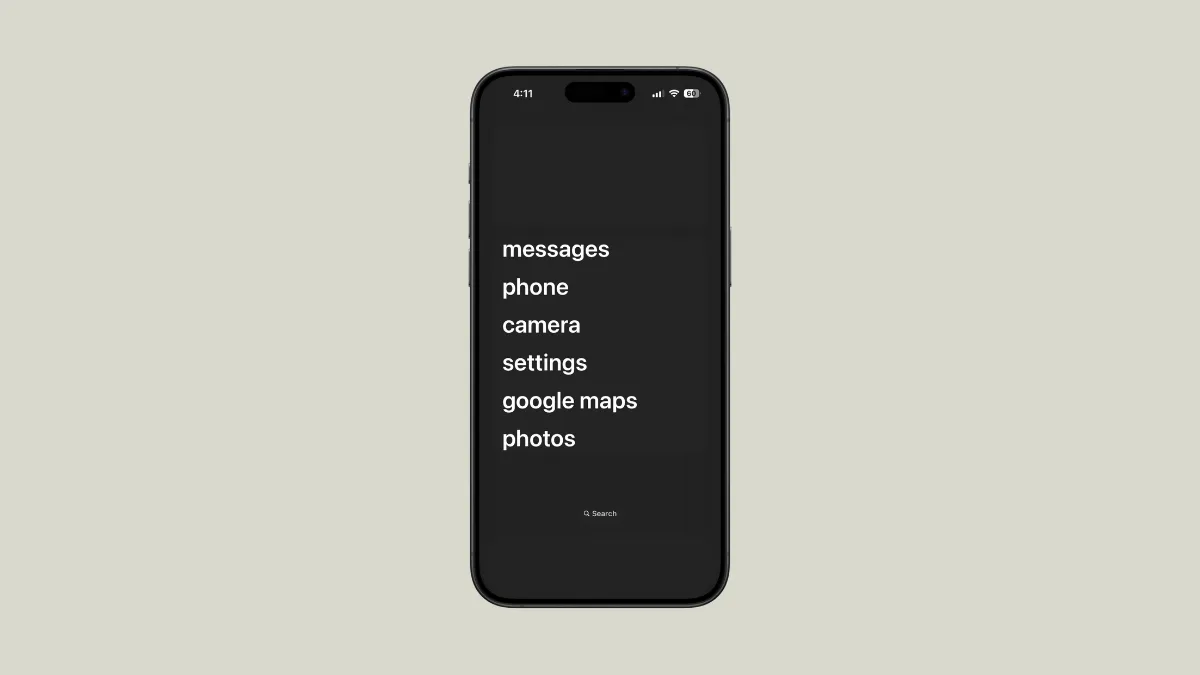When Steve Jobs unveiled the first iPhone nearly two decades ago now, the world of smartphones changed completely. It ushered in the era of a phone that can now do everything. But is it an entirely good change? Unfortunately, the answer is not as straightforward as we would like. Sure, the smartphone has opened up a world of possibilities, but it has also acutely narrowed our world and minds.
If you're someone who constantly finds themselves glued to their phones and would like to cut back on your smartphone usage but are not entirely ready to switch to a dumb phone, the guide is for you.
What is a Dumb Phone? But first, if you're unaware of the "Dumb Phone" train and would like to know more about it before boarding it, here's the deal. Simply put, Dumb Phones are limited in their functionality, with none of the bells and whistles of smartphones. They've seen quite a boom lately, owing to the growing dissatisfaction with the impact smartphones have on life. They usually only have basic features like calling, texting, a camera, an alarm, etc. However, the scope of features differs with different implementations (like some don't have Internet access either) but you get the idea. They're designed to take you back to a pre-smartphone world while also retaining some useful features like Maps.
Now, not everyone is ready to make that kind of commitment of selling their smartphone and buying a dumb phone instead. There are also going to be too many inconveniences associated with not owning a smartphone. For some people, those inconveniences are totally worth it. But they won't be for everyone.
If you just want to dip your toes into the dumb phone waters, limiting your current iPhone is the best way to go about it.
Step 1: Use a Minimal Launcher app
So, how to turn your iPhone into a dumb phone? I'm sure the irony won't be lost on anyone but "there's an app for that!" In fact, there are quite a few apps for dumbing down your phone, so it boils down to which one you want to use.
On iPhone, apps don't get a ton of control of your phone like they can on Android. So, even though these apps are called "launchers", they aren't true launchers. But they've nailed it down as much as they can. They use Home Screen widgets to create a minimalistic and dumb experience on your phone.
The premise is simple. The widgets create a list of apps on your home screen as opposed to the traditional setup with icons. The list contains just the app name, with no notification badges either. The goal is to create a setup that is not meant to appeal to you or invite you in. All these apps, with their bright colors, and their notification badges, create a sense of addiction in the user. With a dumb phone setup, you take away that power.
One such app you can use on your iPhone is called 'Dumb Phone'.
The thing I like the most about this app is that it makes it easy to set up everything. It also includes guides to make the process easier. You can also create multiple profiles to switch between work and non-work apps easily. The new version of the app also allows you to add a Control Center button to switch between profiles more easily, but in my testing, it didn't work.
The one caveat associated with the app, though, is that it isn't free. Most such apps in the App Store aren't. With Dumb Phone, you can get a one-week trial to test if the app is for you. The app also offers both subscription-based and one-time payment models. It costs $2.99/month, or $9.99/ year, or $24.99 for a lifetime.
Here's how you can use Dumb Phone.
- You install Dumb Phone from the App Store.
- Open the app, and right away, you can configure the widget with the apps you want to use.
- One page can hold 6 apps at a time by default. However, you can change this behavior or create multiple widgets to place on multiple screens. You can even edit the names of the apps in the widget.
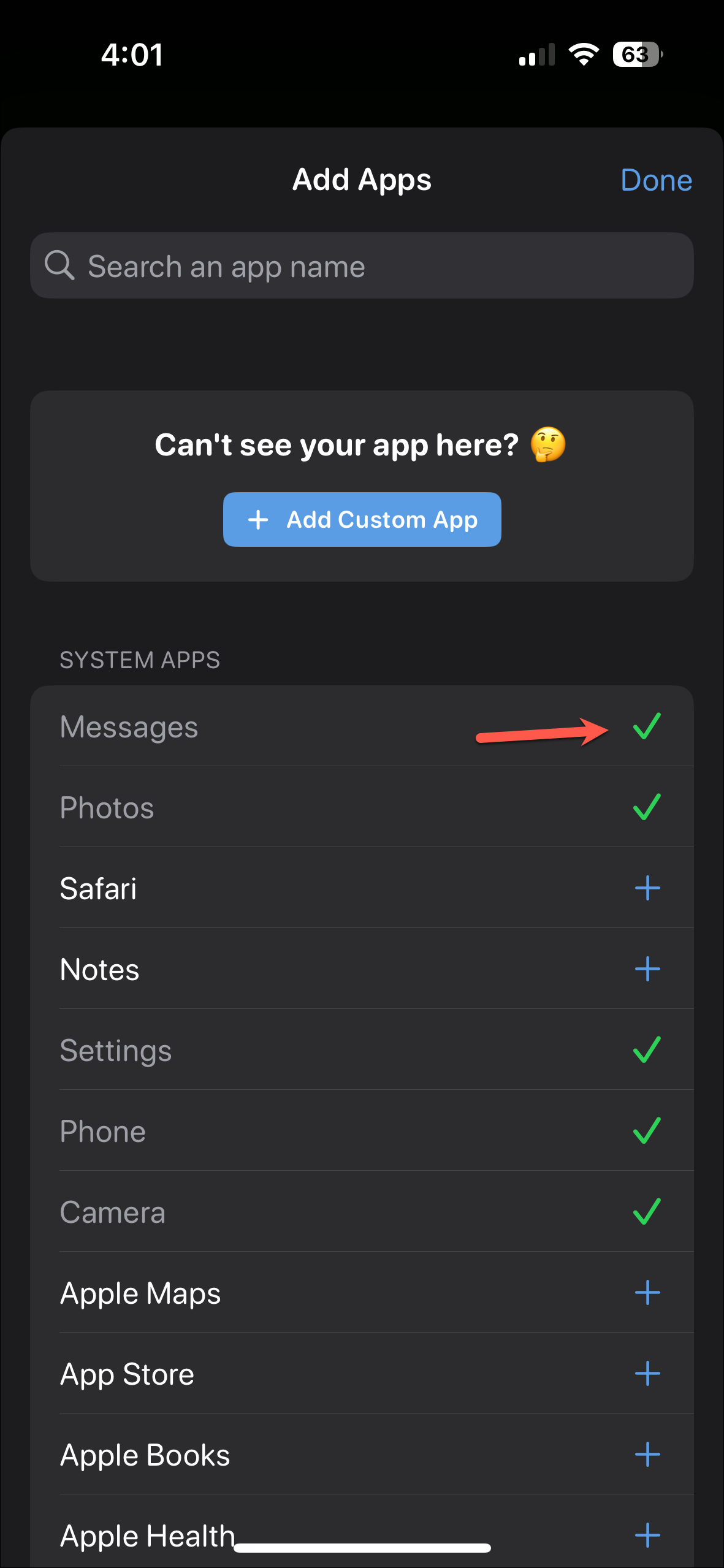
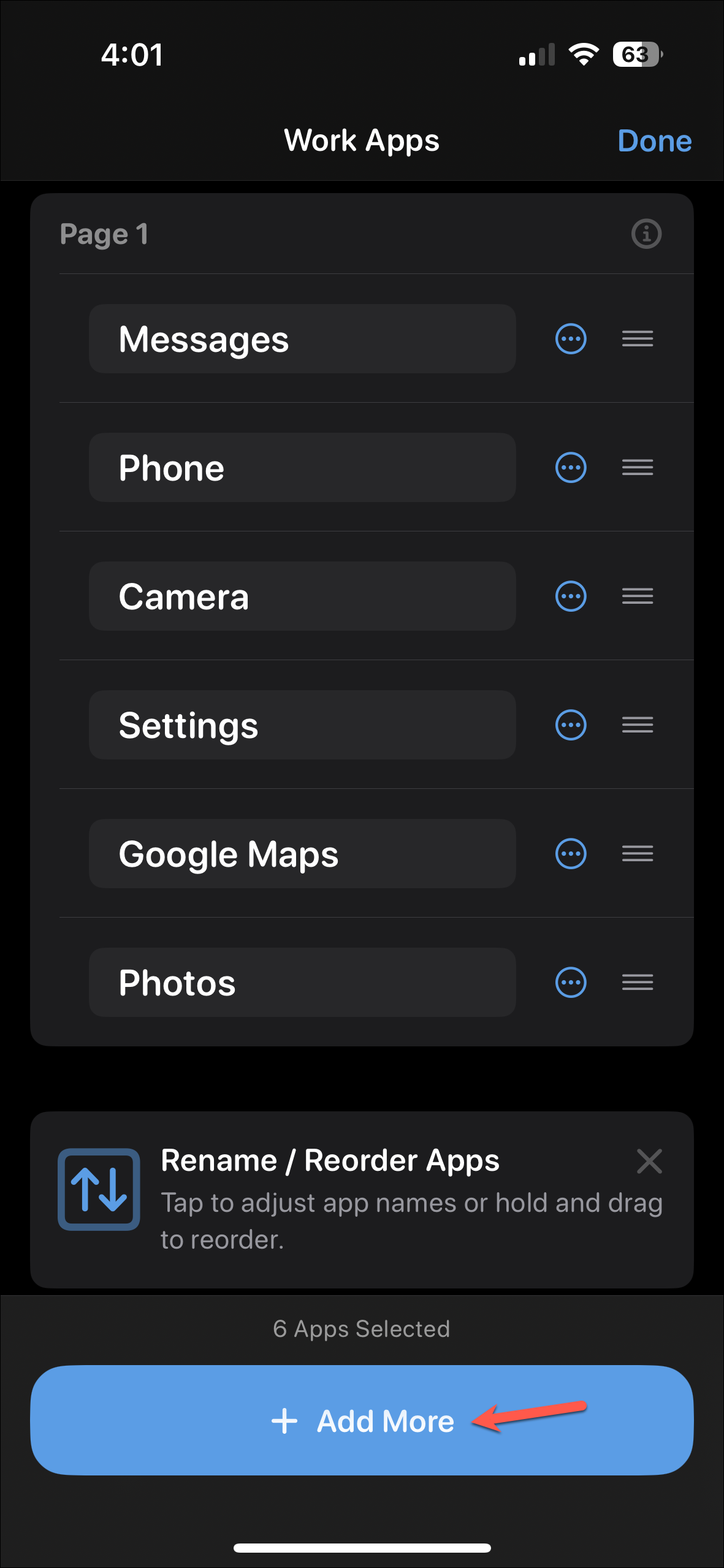
- Once you've created the widget in the app, you go to your home screen, tap and hold it until you enter the jiggle mode, then tap on 'Edit' in the top-left corner. Select 'Add widget' from the options.
- Then, select 'Dumb phone' from the options and add the widget to your home screen.


- Next, you can add spacer widgets to the screen to place the app widget in a more aesthetic manner.
- Add multiple widgets to multiple pages if you want access to more than 6 apps in your setup. But the more simple you keep it, the better it is.
- Then, follow the rest of the steps, such as adding the plain wallpaper (which you can download from the app), enabling dark mode on your phone, and reducing motion (optional but recommended).
- If you choose to reduce motion, tapping the app name from the widget makes it seem like the app is opening directly, and not after opening the Dumb Phone app in the middle. To reduce animation, go to
Settings>Accessibility>Motionand turn on the toggle for 'Reduce Motion'.

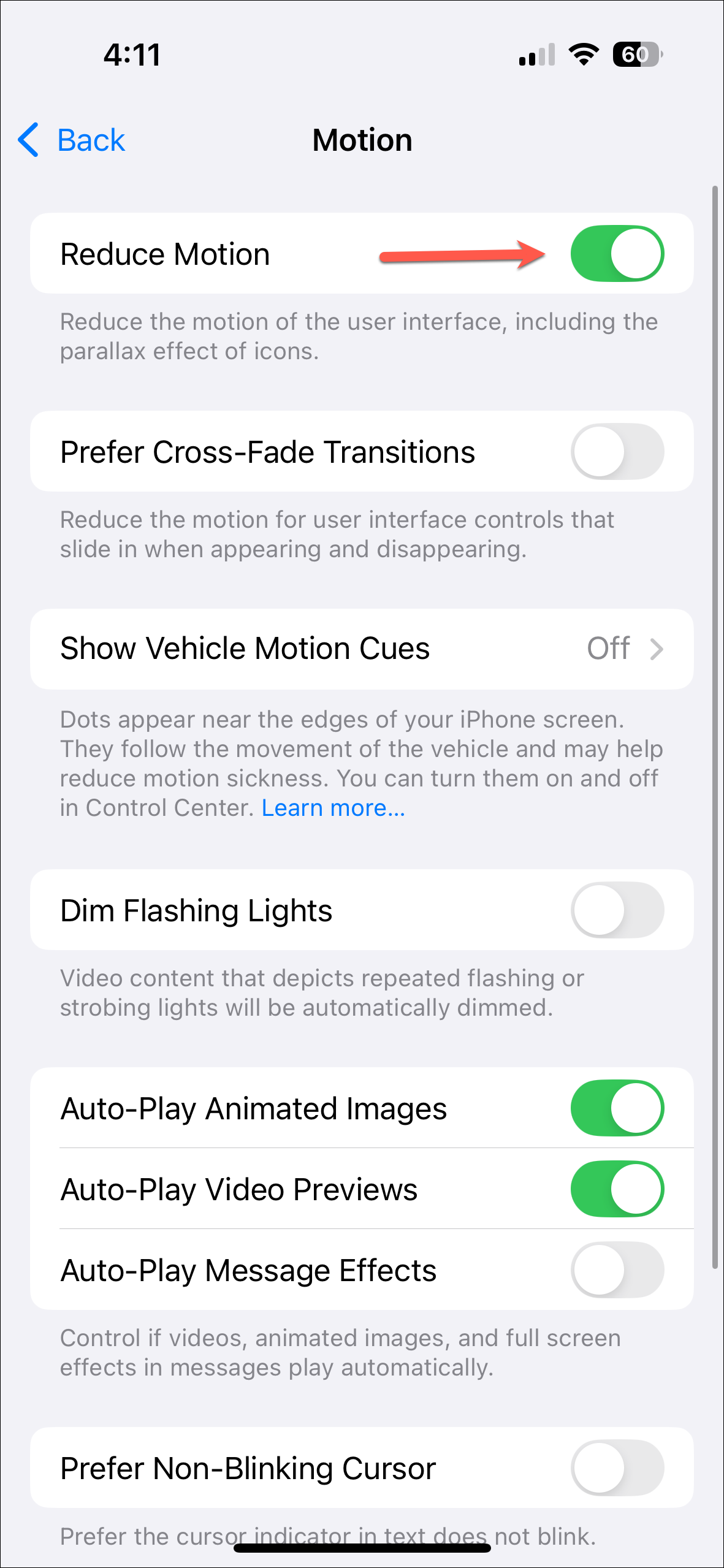
- Now, to make it a traditional Dumb Phone setup, you'll want to remove everything else from your Home Screen as well as the dock. Enter the jiggle mode and tap the '-' icon on an app.
- Then, select 'Remove from Home Screen' from the options.
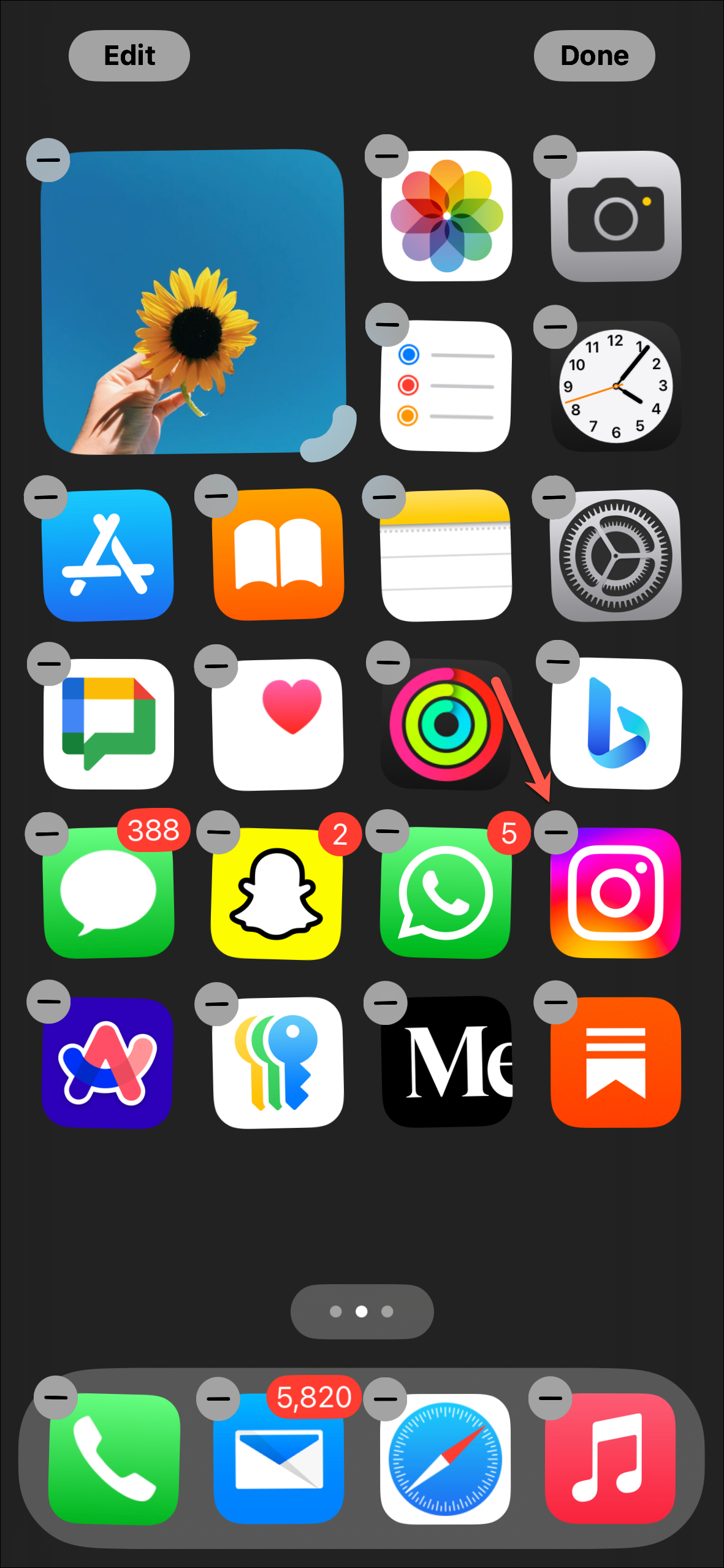
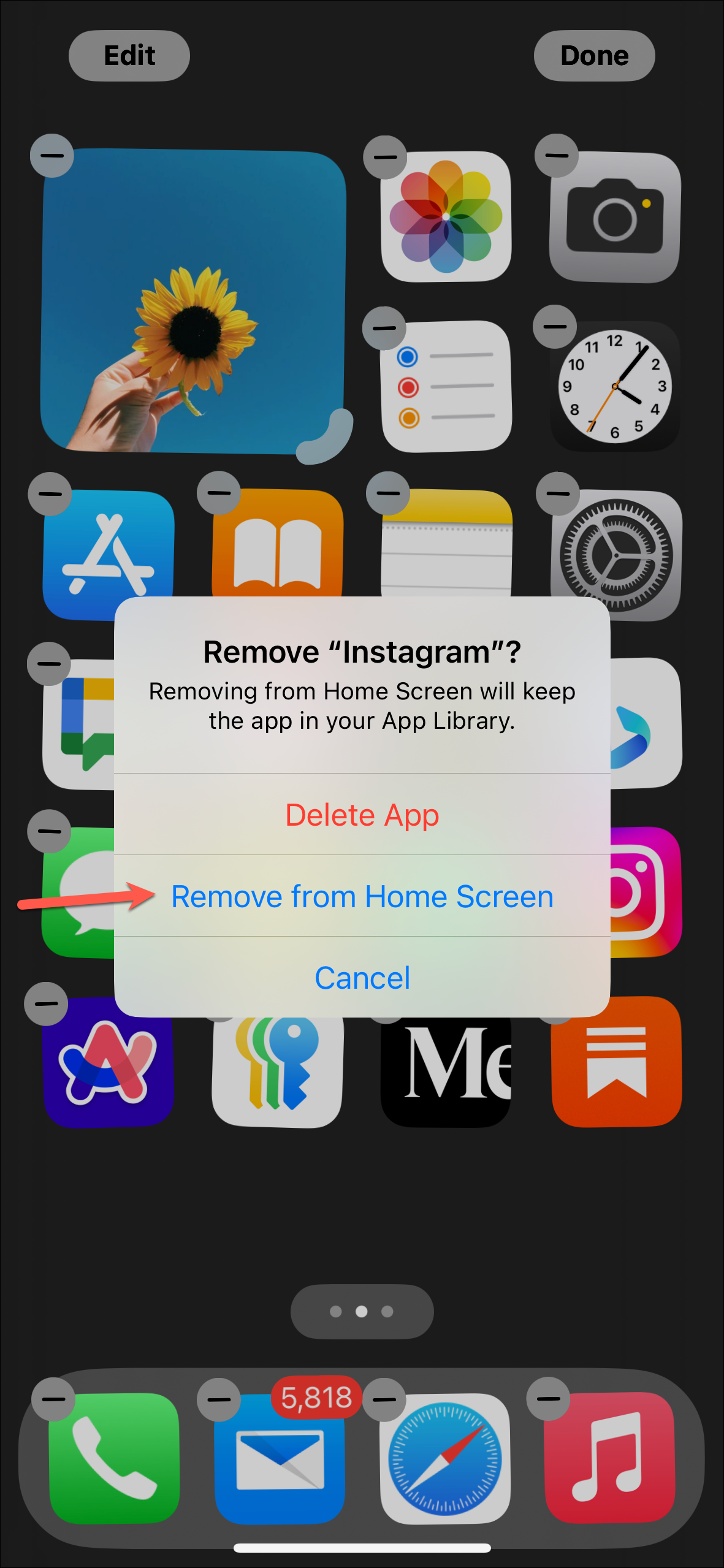
- An alternative is to deselect the entire pages so you don't have to spend time deleting each app and widget from your home screen. Tap the dots above the dock in the jiggle mode.
- Then, deselect entire pages. You can also delete them using the '-' icon on the top left of the thumbnail.


Step 2: Delete and Block Apps
Curating the look of a dumb phone is only part of it. Even if you cut back distractions from the home screen of your iPhone, the fact is that the apps are still accessible from the App Library and the spotlight search is also only one gesture away.
The next step involves deleting unwanted apps and cutting back on apps you find yourself wasting away most of your time on. Now, in an ideal world, you'd simply delete all those apps from your phone and be done with it. But who are we kidding? That's almost impossible for most of us. And it isn't like they're all evil apps (even if the algorithms are designed to keep you hooked). There's a lot to be learned on there too.
What we want to really do is not spend hours mindlessly doomscrolling on these apps, especially when you're supposed to be doing something else, but otherwise too. "Consume the content in moderation."
There are multiple ways you can go about blocking apps on your phone.
Use Screen Time
iPhone already has an inherent way of managing how you use your phone. It's called Screen Time. You can schedule Downtime with Screen Time and only allow phone calls and certain apps during that time.
- Open the Settings app and navigate to 'Screen Time'.
- Tap on 'Turn On Screen Time' if you haven't ever set it up.
- Then, tap on 'Turn on Screen Time' and 'This is my iPhone' on the subsequent screens.
- Next, go to 'Downtime'.
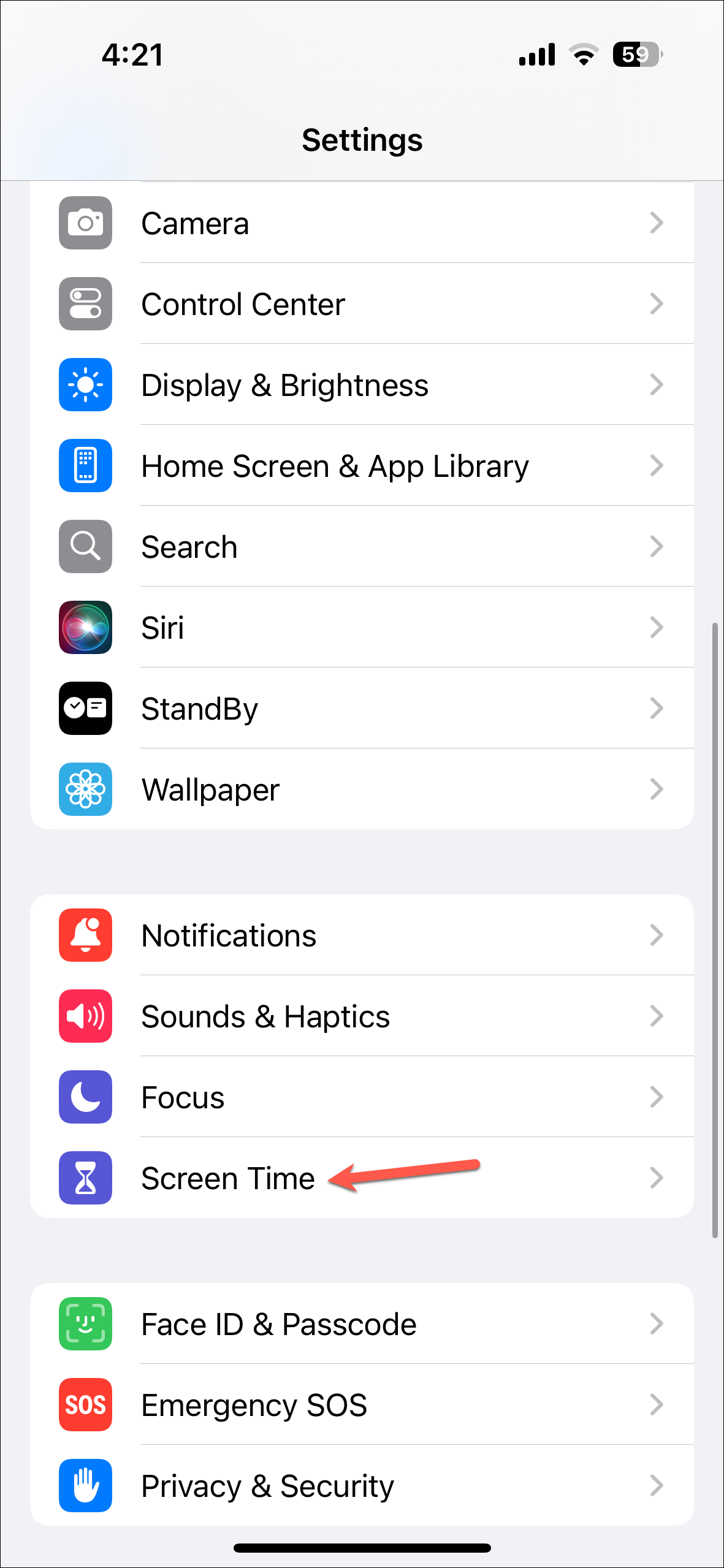

- Here, you can either turn it on or create a schedule for it. Create a schedule to keep it turned on at all times to convert your iPhone into a dumbphone.
- Then, go to 'Always Allowed' to allow the apps and contacts during Screen Time.
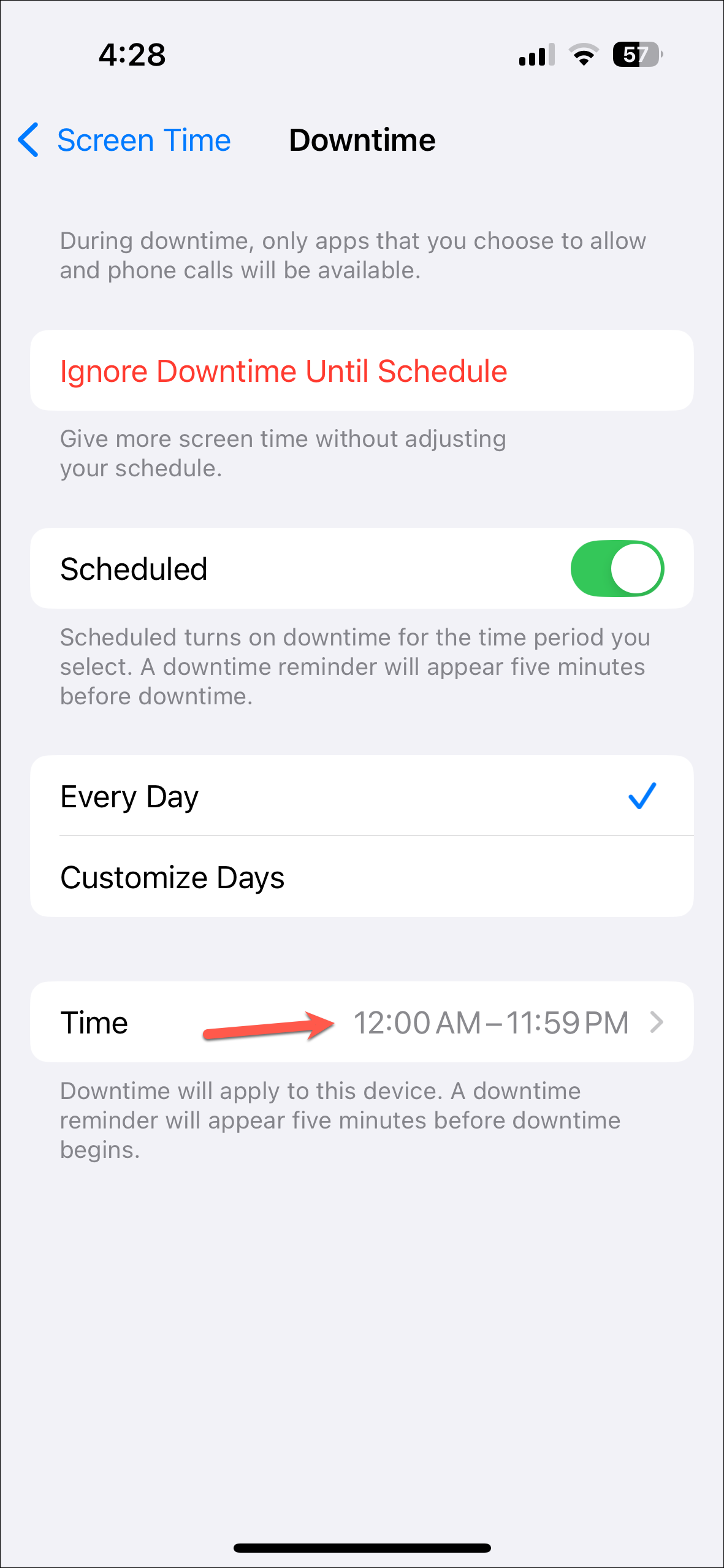

- Choose 'Dumb Phone' in the list of apps you want to allow; otherwise, the widget will stop working.
- Next, if you also want to limit your browsing, you can disable Safari. Go to 'Content & Privacy Restrictions'.
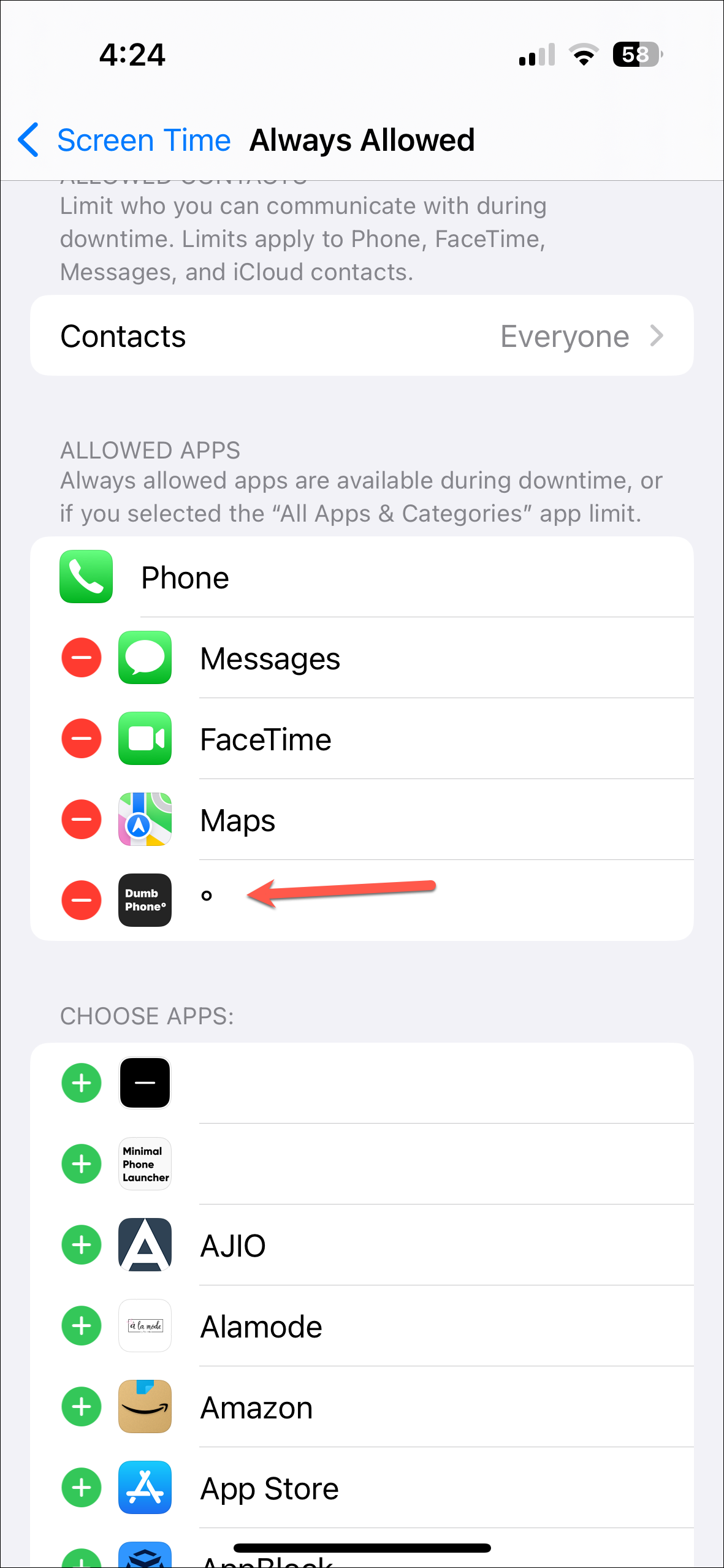
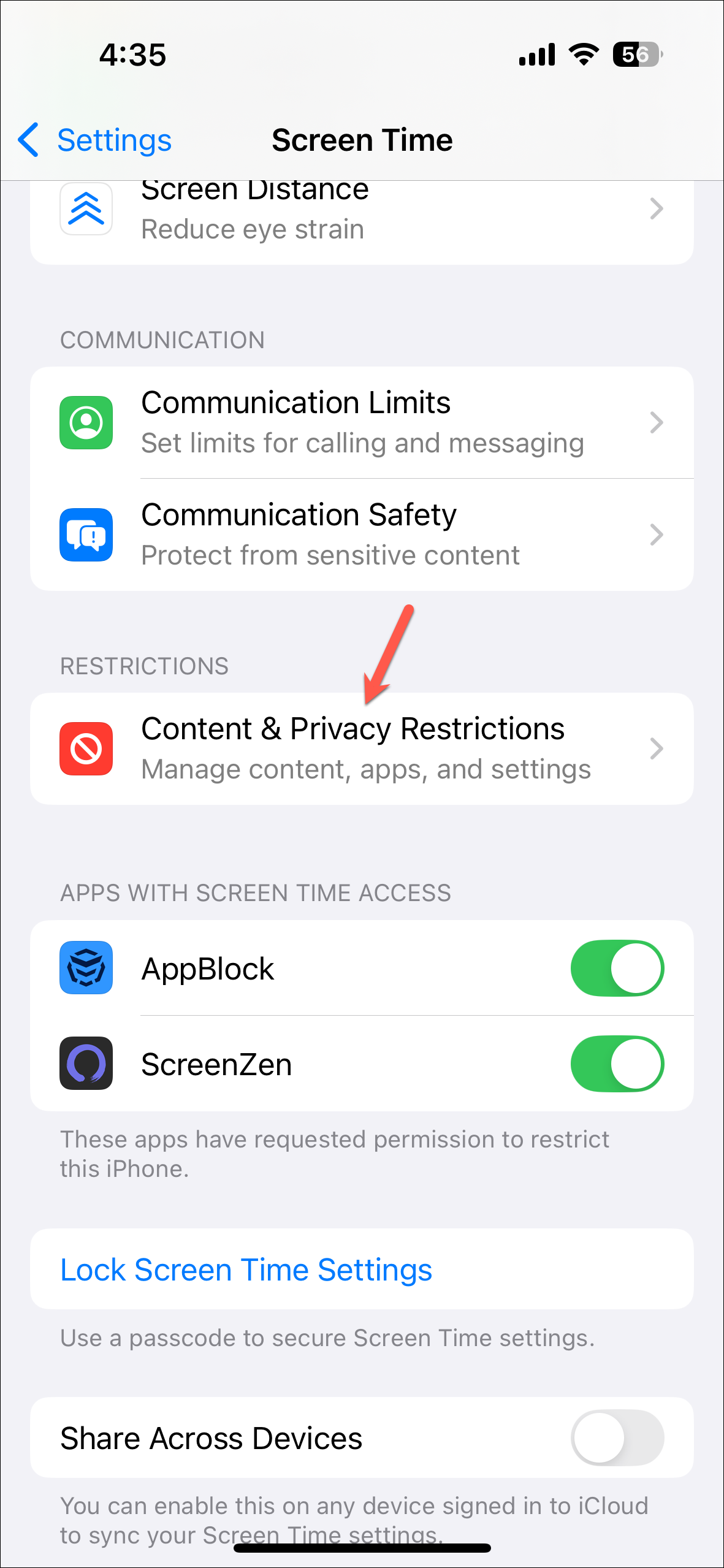
- Turn on the toggle for it. Then, go to 'Allowed Apps & Features'.
- Turn off the toggle for Safari and any other system apps.
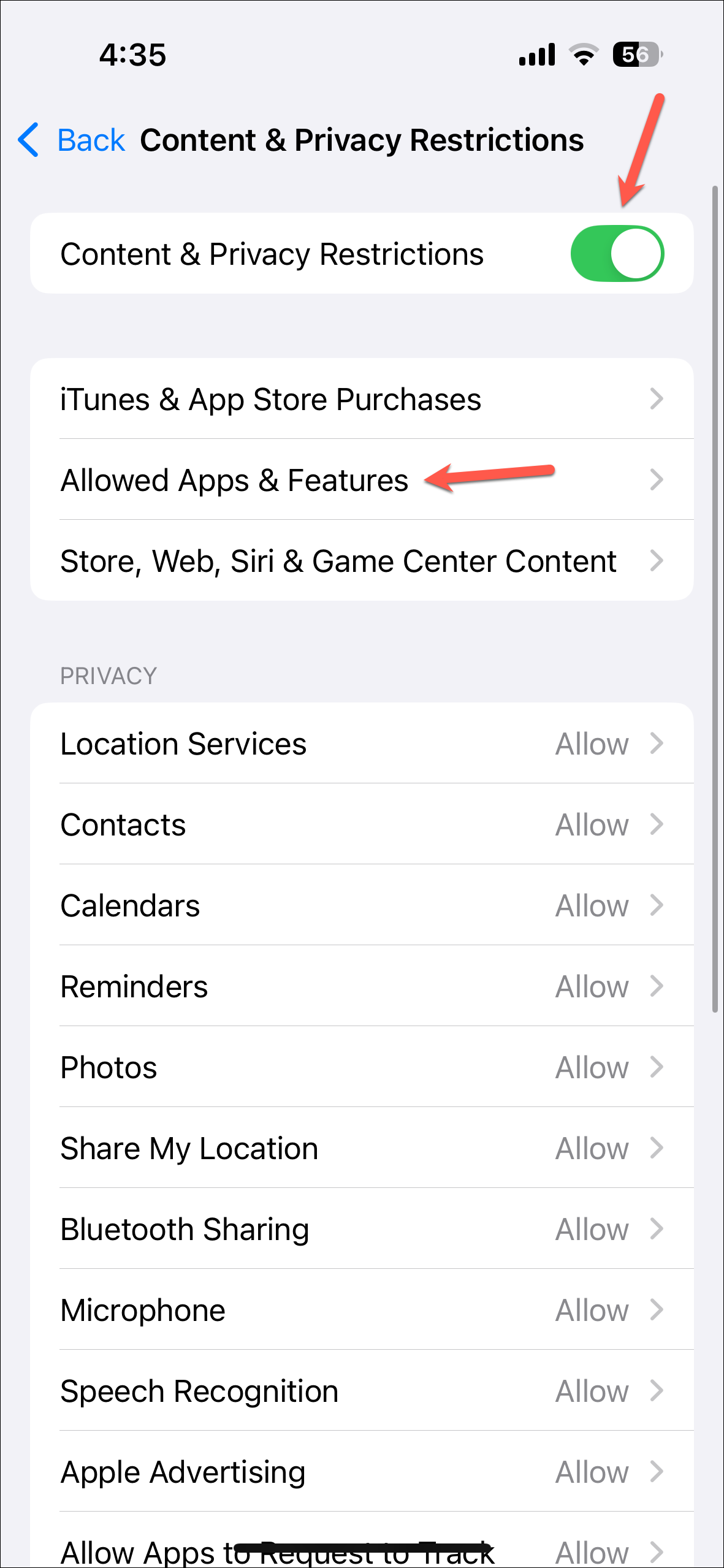
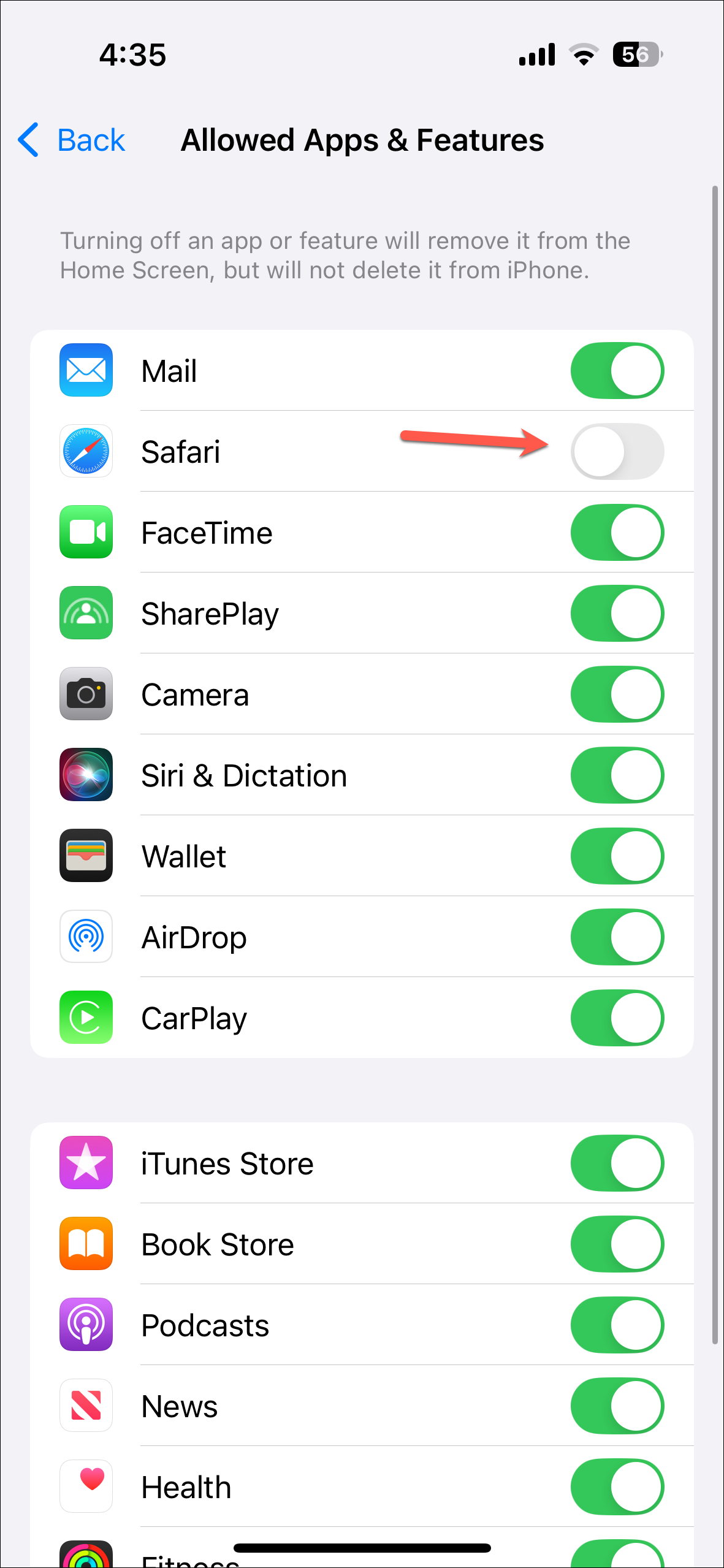
- Now, come back to Screen Time settings, tap on 'Lock Screen Time Settings', and create a passcode for Screen Time so you cannot add more time to apps without the passcode.

Use Third-Party Apps
You can also install free third-party apps, like ScreenZen, to lock your apps as Screen Time itself can be a little complicated to set up. You'll need to give third-party apps access to your Screen Time settings so they can restrict the apps on your device.
ScreenZen not only blocks your apps but also lets you customize the degree of block you want to apply. If you want to strictly block some apps, that's possible, but if you only want to restrict your usage, the app adds messages like "Do I really want this?" with a 5-second timer in an attempt to deter you.
Step 3: Reduce Notifications
The next step in achieving that Dumb Phone zen is to reduce the number of notifications you receive throughout the day. The sheer number of notifications you get from apps on your phone interrupt you while you're in the middle of something, whether it's work or spending some quality time with family.
Ask yourself which notifications you can't afford to miss out on (you'll be surprised) and turn off the rest, most of which are marketing notifications anyway. Go to Settings > Notifications to turn off notifications from unwanted apps.
Things to know:
- You can also use black and white coloring on your iPhone by using Color Filters (
Settings>Accessibility>Display & Text Size>Color Filters>Grayscale) to make the rest of the apps in your App Library even more unappealing. - You can also enable Color Filters in the Accessibility Shortcuts so you can switch between colors and black & white more quickly.
- If you don't want to spend money on a "launcher" app, you can also use a free app like Widgy to create the widget yourself, but that would take more time and effort.

